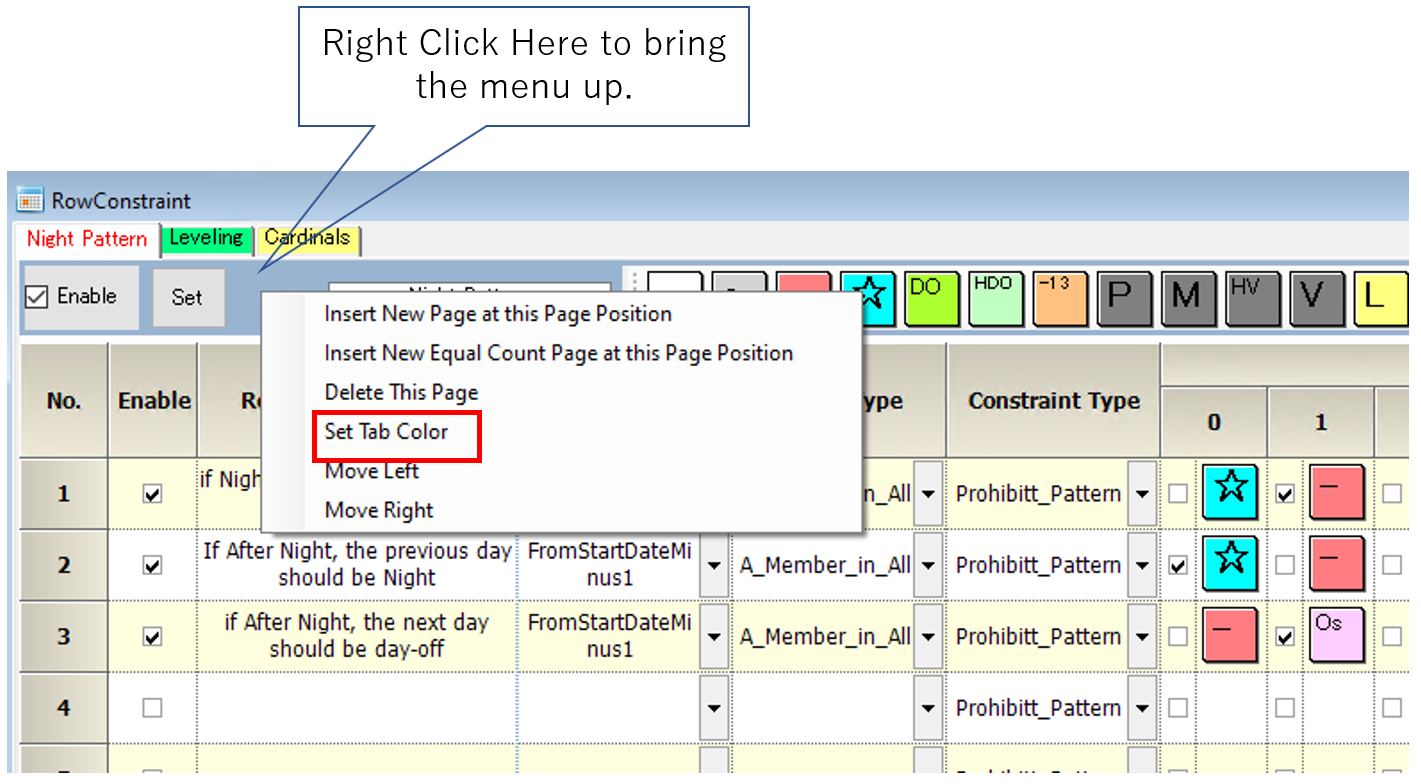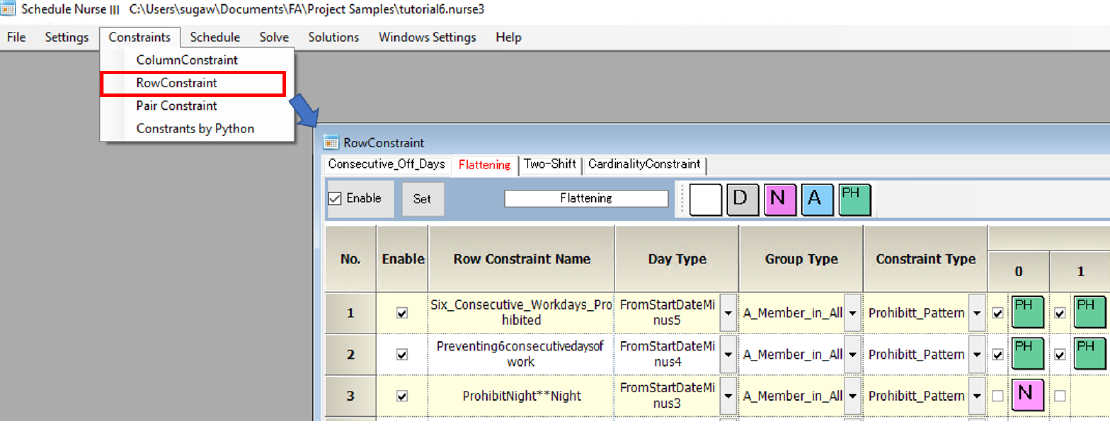Four types of constraints
There are four types of column constraints, as shown in the figure below.
| Type | content |
|---|---|
| Prohibitt_Pattern | Describes one or more patterns. |
| Max-Min_Pattern | Specifies a maximum or minimum shifts or phase objects. |
| Integer_Count | Counts shift or phase objects which have “Counts” field. Only one pattern is allowed. |
| Max-Min_Hours | Specifies a maximum or minimum shift time described by “Work Hours” field. Only one pattern is allowed. |
Items that must be set
■Enable Check Box: If not checked, the constraint will be ignored.
■Set Button: After any changes are made, they will not be reflected until you click the set button.
■"Row Cconstraint Name", “Day Type”, “Group Type”, “Shift Pattern” must listed.
■Constraint Type : Select one of the above constraint types.
■If any of 1 to 7 is listed for the soft level, the constraint becomes a soft constraint; if not listed, the constraint is a hard constraint.

First pattern daytype/Last pattern daytype
Optional. Can be blank.
■When describing, an empty set is not allowed.
■If the “First pattern daytype” is set, the constraint takes effect when the shift pattern 0 is matched.
■If the “Last pattern daytype” is set ,and the pattern is multiple, the constraint taskes effect when the last shift pattern matches.
■If the first and last pattern daytype are set, the constraint will be valid only if both patterns match.

Checking the Day set in the constraint
Click the middle mouse button (press the mouse wheel) on the “Day Type” description to open the calendar.
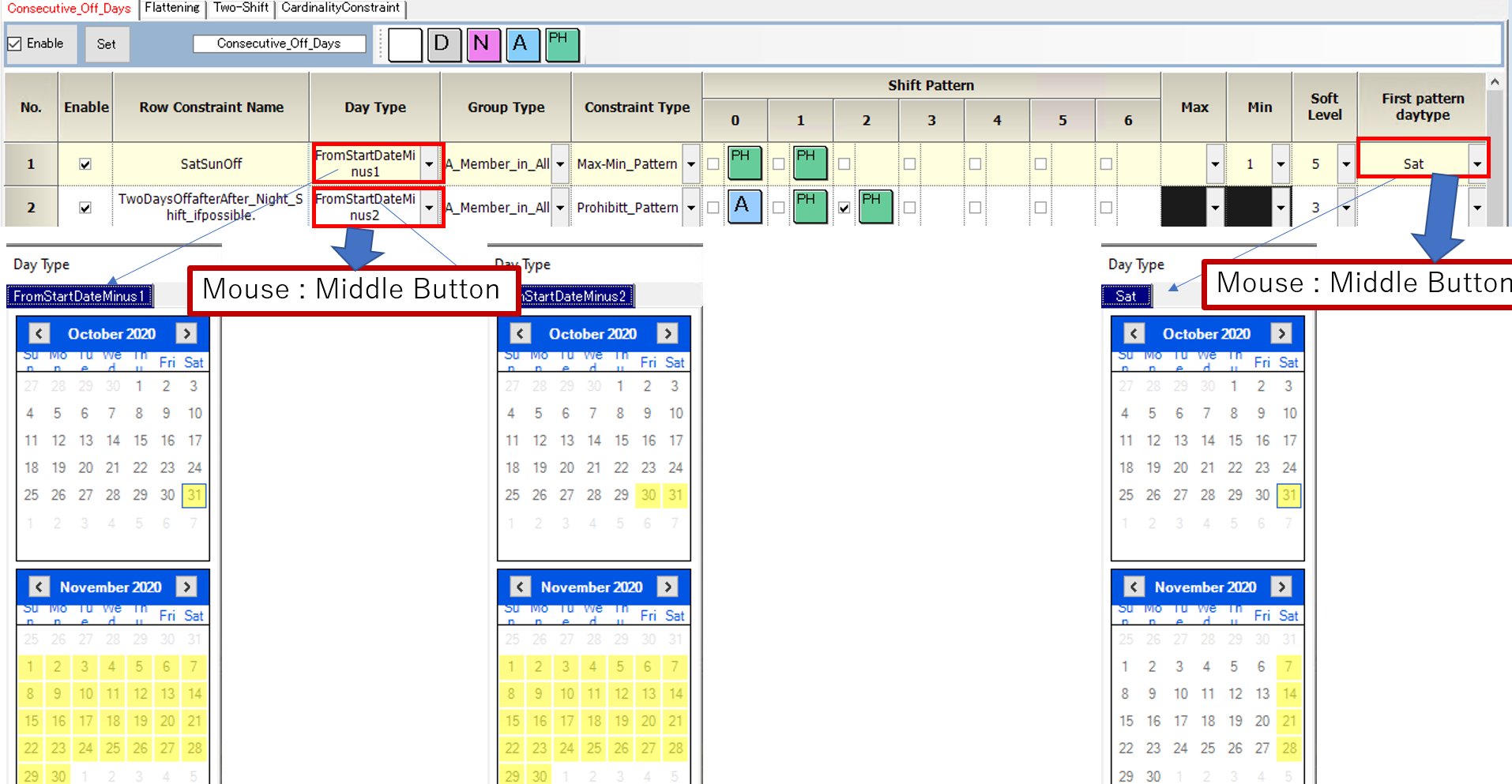
Checking the group set
A tooltip appears by clicking the middle mouse button (press the mouse wheel) in the “Group Type” description.
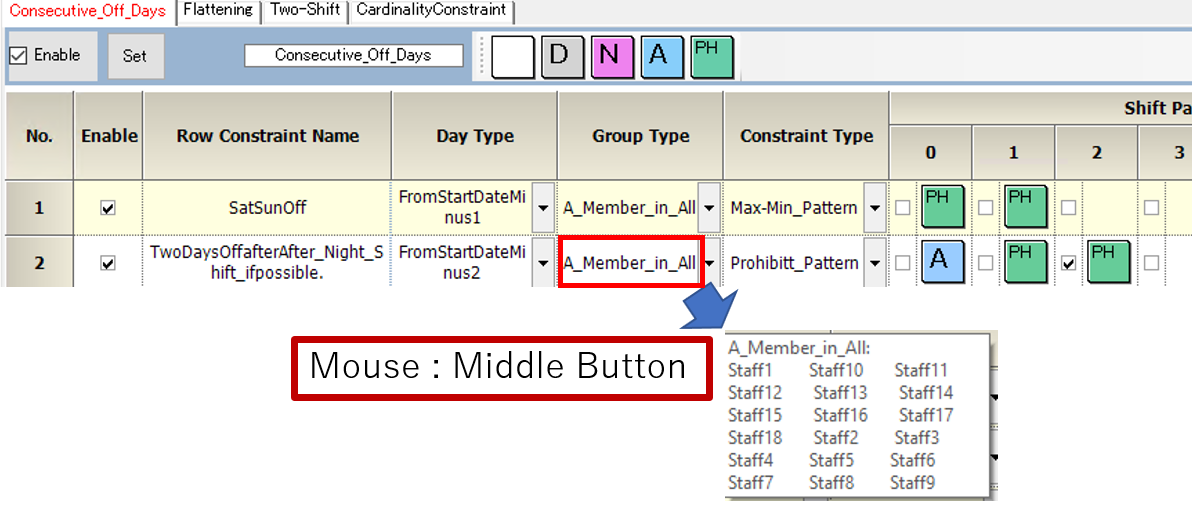
Time Constraints
Select “Max-Min_Hours”.
■Describe one pattern. Multiple patterns are not allowed.
<br
■Time must be described for either or both maximum and minimum.
■Soft constraints are not supported.
■First/Last pattern daytype is not allowed.
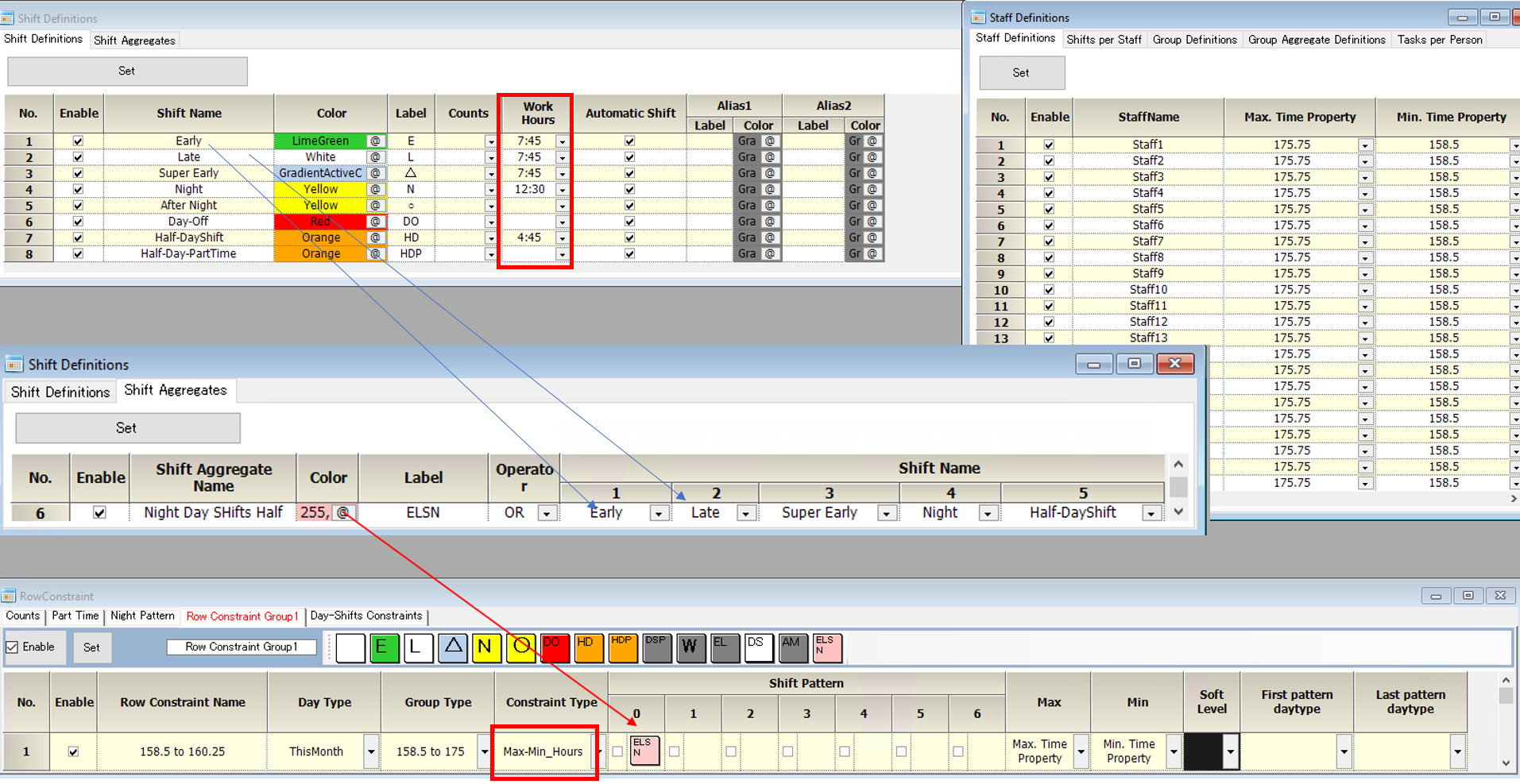
Integer_Count Constraint
■ It counts “Count” field of shifts or phase objects.
■ Only one pattern is allowed. Multiple patterns are prohibited.
■ The constraint must be described in either or both maximum and minimum.
■ Negation (✓) is not supported.
■ Soft constraints, are supported.
■ Couting objects are the set that must be an exclusive in order to be counted correctly.
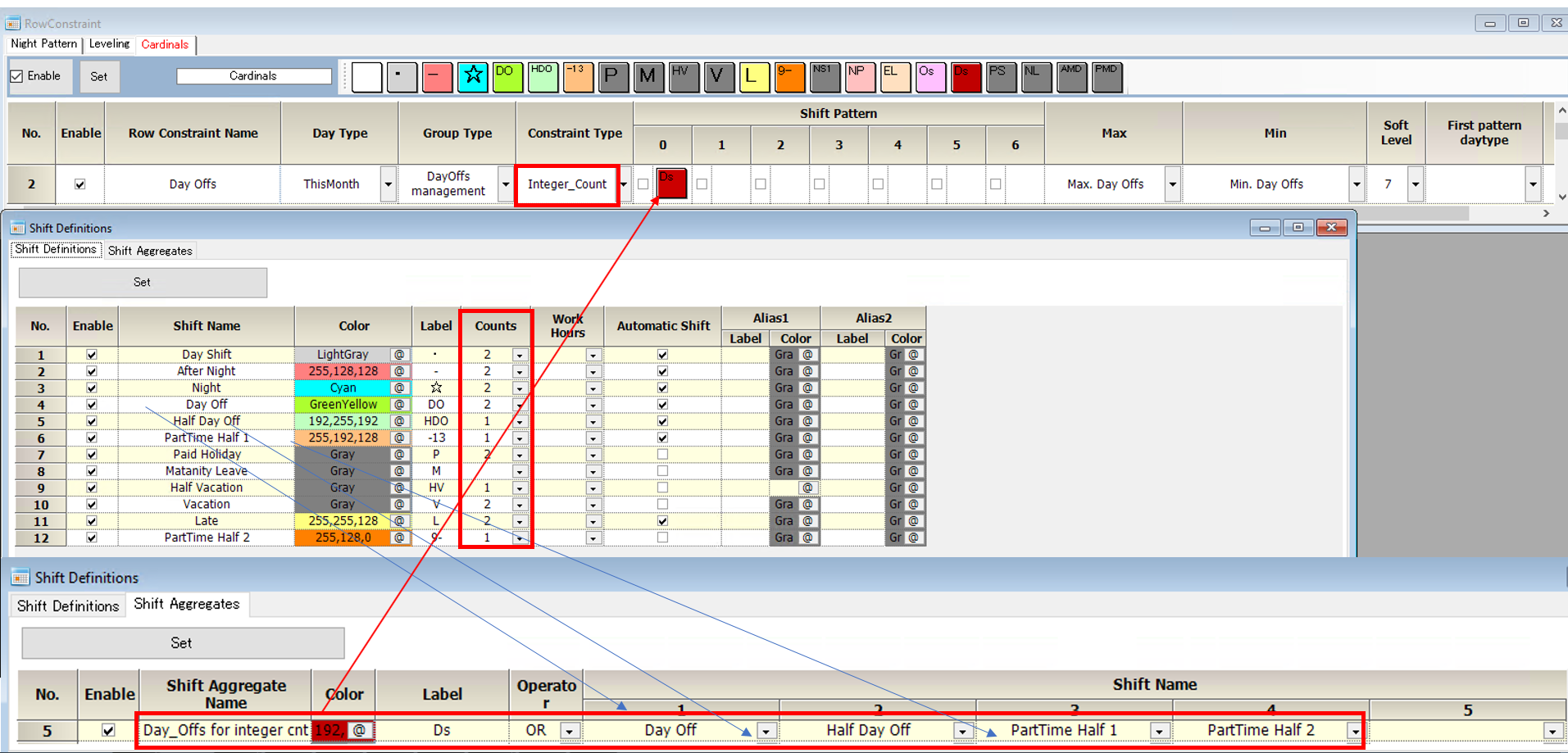
Vectorized maximum-minimum
■This is a description method that can be applied to “Max-Min_Pattern” or “Integer_Count”.
■This is applicable to attribute items in groups described by positive integers only in the staff definition. Blank spaces are allowed. In that case, no constraints will be generated for that staff.
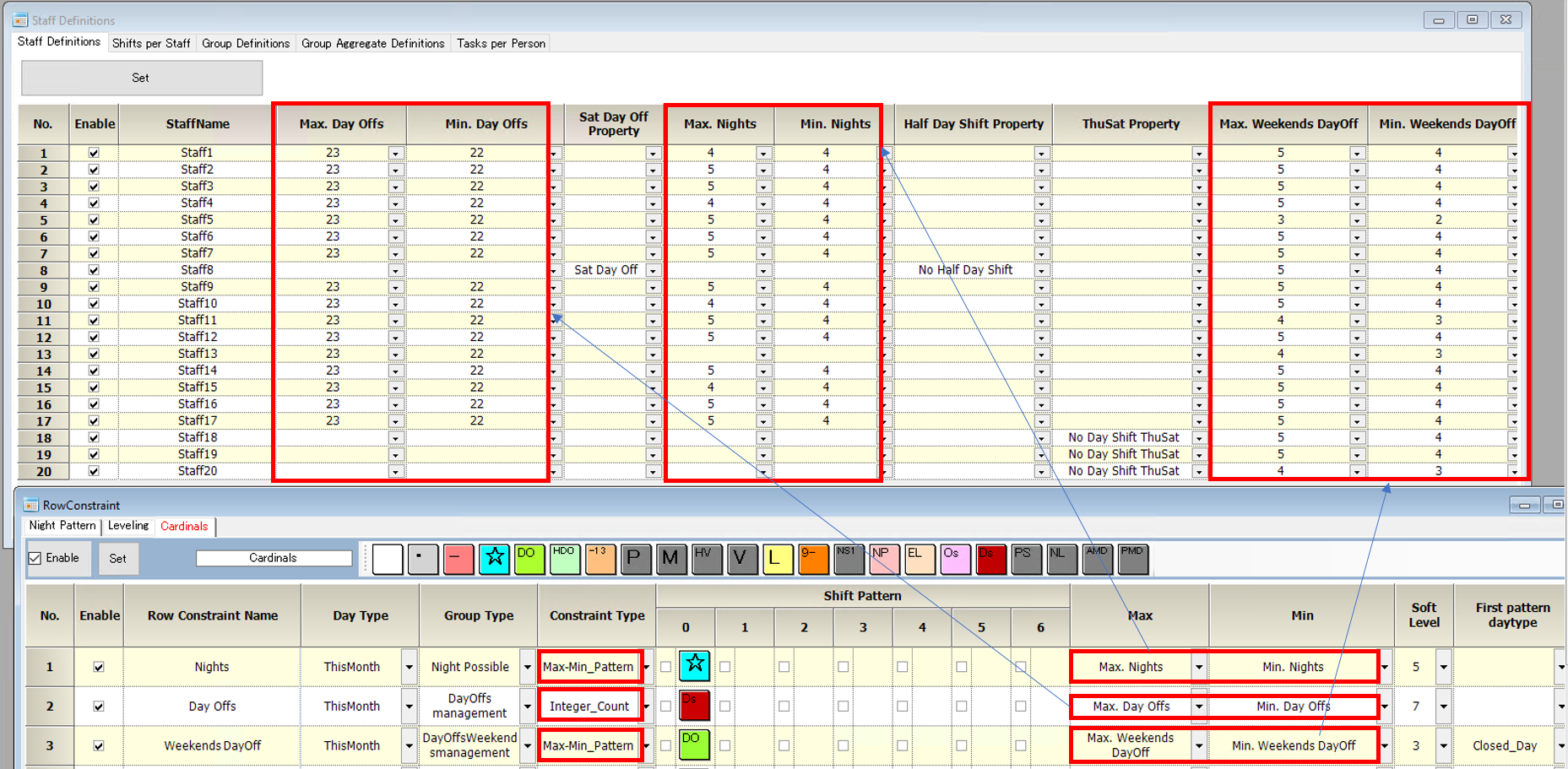
Equal count constraint
Constrain ΣAi==ΣBi to be the target. ■Soft constraints are also supported; allowable errors are treated the same as in Deviation of inequality constraints .
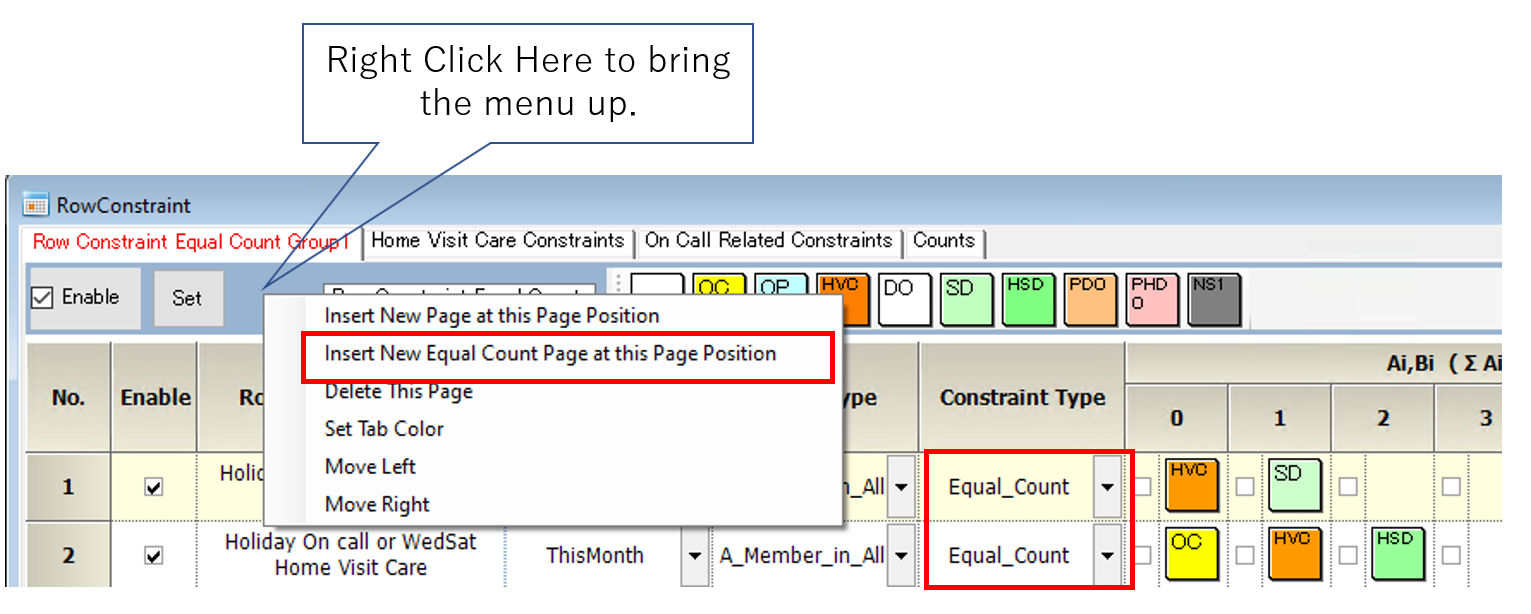

Intercept Option
A numerical offset can be added as an option.
The target is constrained to be ΣAi==ΣBi+offset.

In the above figure,
Σ D == Σ N -1
Integer Equal Count
Numeric operations can be extended with integer counts. In this way, there are three possible operators
== (equal to)
>= (greater than or equal to)
<= (less than or equal to)

This operation requires that an integer count value be defined in the shift table. Each integer count value is a coefficient of the following equation.
ΣACoff[i]*A[i] Operator ΣBCoff[i]*B[i]+offset

In the above figure,
Σ D == 2*ΣN+ΣA -1
Phase Pattern
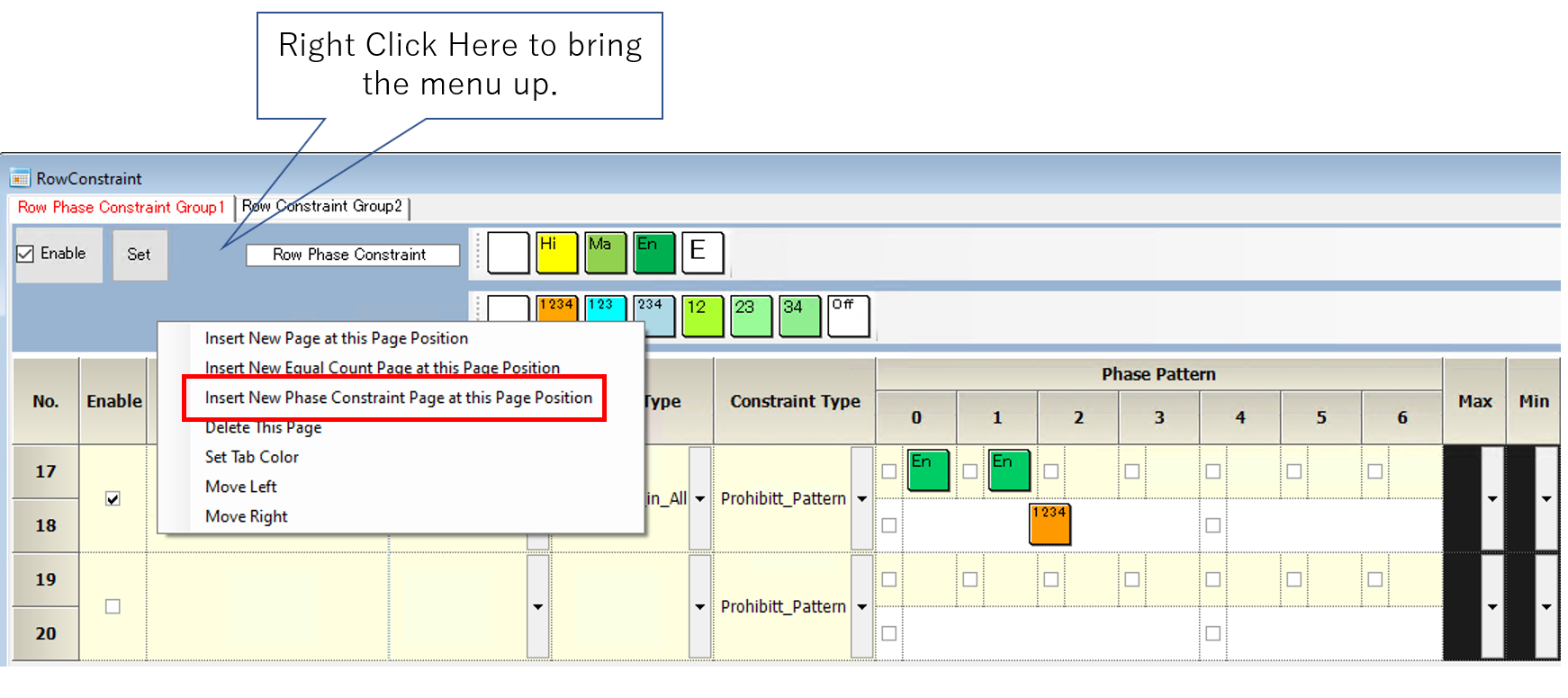
■ The upper row is the task palette The lower row is the shift palette.
■ You need to describe at least one task. Shift is optional. It can be omitted.
■ When there is a shift, it acts as an AND for the upper phase pattern.
■ The First/Last pattern daytype is invalid.
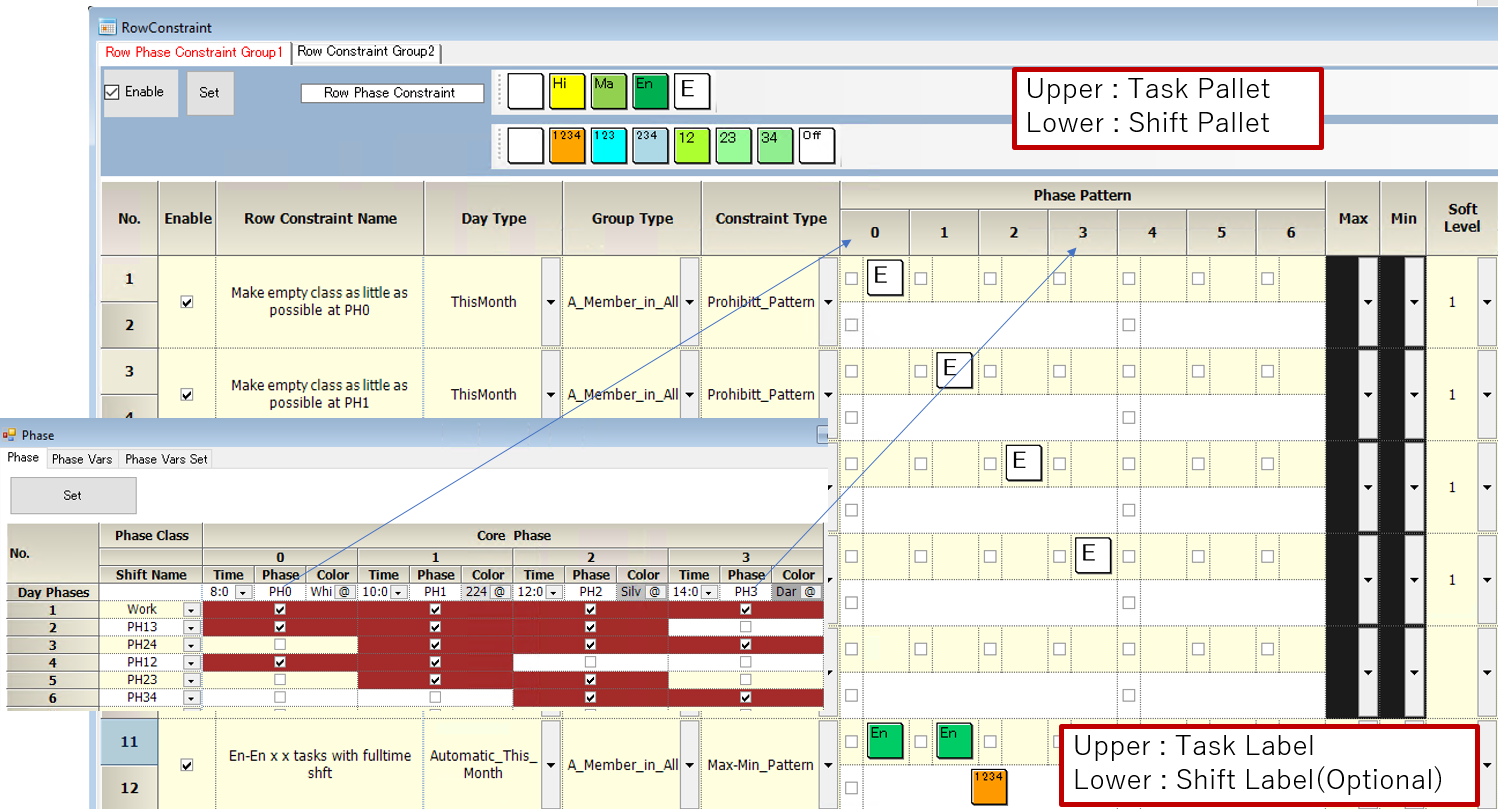
Task Count
The following is an example of a constraint that counts tasks regardless of phase.

■ Tasks are described only in phase 0.
■ When there is a shift, it acts as AND for the upper phase pattern.
■ The first and last day-of-week types are invalid.
■ Only NoTaskVar can be used as the NOT operator of a task.

The shift section supports only one shift or shift set. The NOT operator of a shift is also supported. Operates as AND when a shift is described.
Tab management
The color, order, etc. of tabs can be changed.
